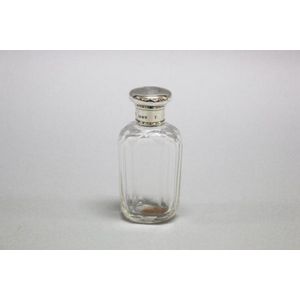Georgian Cut Glass Tea Caddy, 1810
You must be a subscriber, and be logged in to view price and dealer details.
Subscribe Now to view actual auction price for this item
When you subscribe, you have the option of setting the currency in which to display prices to $Au, $US, $NZ or Stg.
- Georgian - As an English stylistic period, Georgian is usually taken to cover the period from George I (1714) to the Regency of Prince George (1811-20), although the period from 1800 to 1830 is sometimes designated as the Regency period. During the Georgian period the great English cabinetmakers and designers such as Chippendale, Hepplewhite, Adam Sheraton etc., were all active.
Therefore there isn't a single 'Georgian style' as such and to say something is 'Georgian', usually means it was made between 1714 and 1830. This assumes we discount George V and George VI, both being from the 20th century.
The styles popular at the time of each reign were:
George I (1714-1727) saw out the last years of the Baroque period.
George II (1727-1760) reigned during the Rococo period.
George III (1760-1820) saw the last gasp of the Rococo, all of the early Neo-Classic 'Adam style' and most of the later neo-Classic 'Regency style'.
George IV (Prince Regent 1820-1830)encompassed the last of the 'Regency' style.
William IV's reign (1830-1837) was something of a no man's land (stylistically) and he wasn't a 'George' anyway. He covered the last glimmerings of 'Regency' and the start of the 'Victorian' style. - Cut Glass - Cut glass is glassware decorated with facets, grooves and depressions of various sizes and shapes, made by cutting into the surface of the glass using a rotating abrasive wheel. The glass is ground so the surface consists of facets, which have a high degree of light refraction, so that the surface sparkles.
The techniques of glass cutting had been known since the 8th century BC, and the practice was revived in Bohemia and Germany in the early part of the 16th century and in England in the 18th century. Cutting became the most common method of decorating glass in the second half of the 18th century and the early 19th century. - Circa - A Latin term meaning 'about', often used in the antique trade to give an approximate date for the piece, usually considered to be five years on either side of the circa year. Thus, circa 1900 means the piece was made about 1900, probably between 1895 and 1905. The expression is sometimes abbreviated to c.1900.
This item has been included into following indexes:
Visually similar items

Antique perfume bottle with sterling silver cap, marked London, TJW, 1896, approx 10 cm high

A Daum glass and silver spirit 'Muff' or Absinthe bottle, circa 1885, the removable silver flask by Baudet (Baudet and donkey in lozenge) and a 1913 Birmingham sterling silver top by the boots pure Drug Company, the bottle decorated with enamel painted vio

A cocktail shaker with silver-plated mount, height 24 cm

Lalique perfume bottle, 19 cm high
